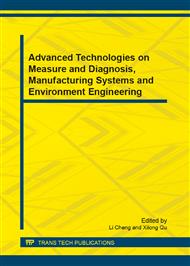p.373
p.378
p.382
p.387
p.392
p.397
p.401
p.406
p.411
Design of Electrical Impedance Tomography System Based on Layer Stripping Process
Abstract:
Electrical impedance tomography (EIT) is a non-invasive technique for imaging the conductivity distribution of a body section. The EIT technique has several potential advantages over the current imaging methods. In order to improve the image quality, A layer stripping process algorithm for electrical impedance tomography in the two-dimensional (2-D), finite element method is used to solve the forward problem numerically. New results of a reconstruction of a numerically simulated phantom chest are presented. In the paper the EIT system is proposed to expand the measurement sites, which is composed of 3 subsystems, rotary scheme, switches network and measurement system. These results of a reconstruction of a numerically simulated phantom chest, several of the clinical applications include monitoring heart and lung function, diagnosis of pulmonary embolus, diagnosis of pulmonary edema, monitoring for internal bleeding, and the early detection of breast cancer.
Info:
Periodical:
Pages:
392-396
Citation:
Online since:
June 2013
Authors:
Price:
Сopyright:
© 2013 Trans Tech Publications Ltd. All Rights Reserved
Share:
Citation:


